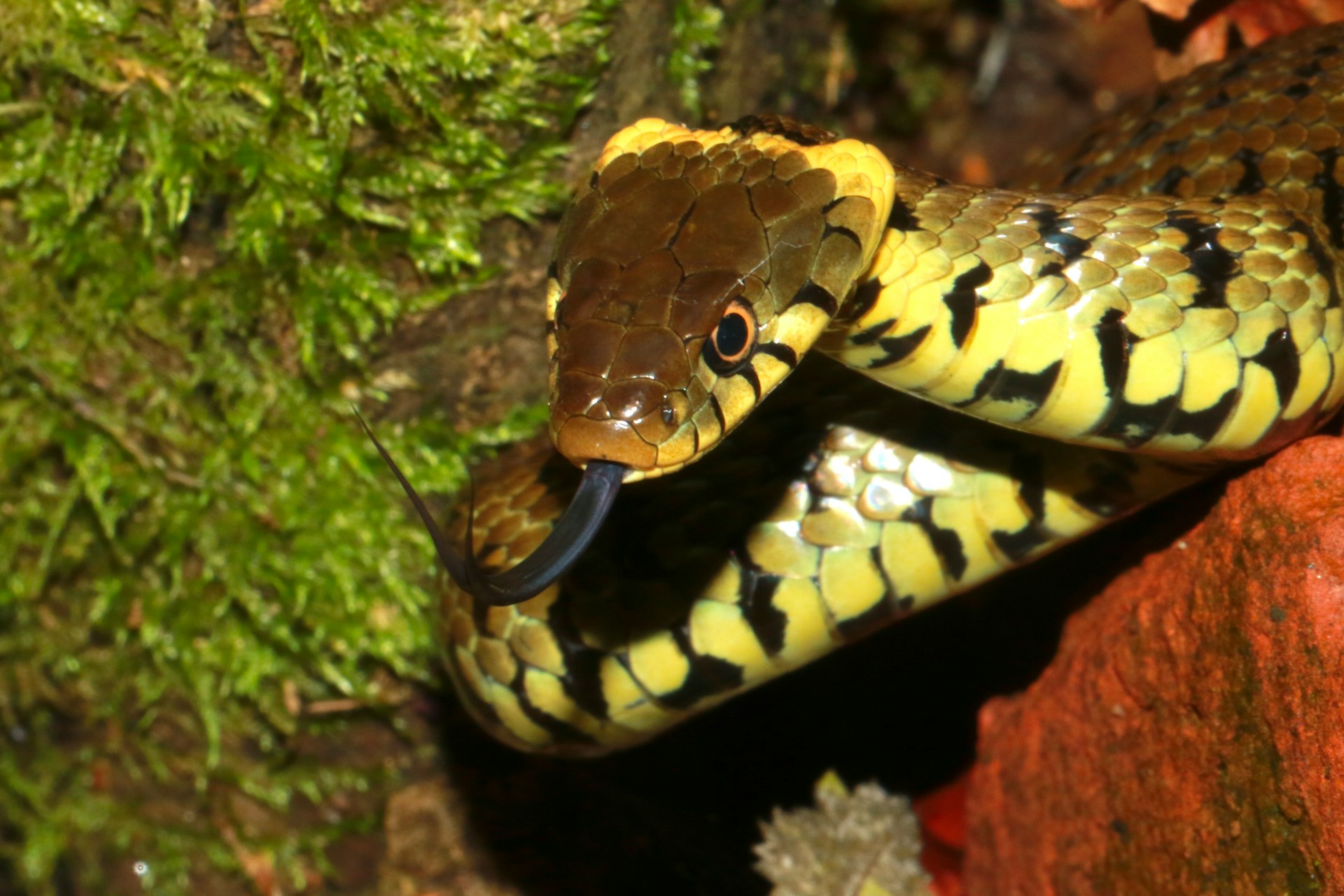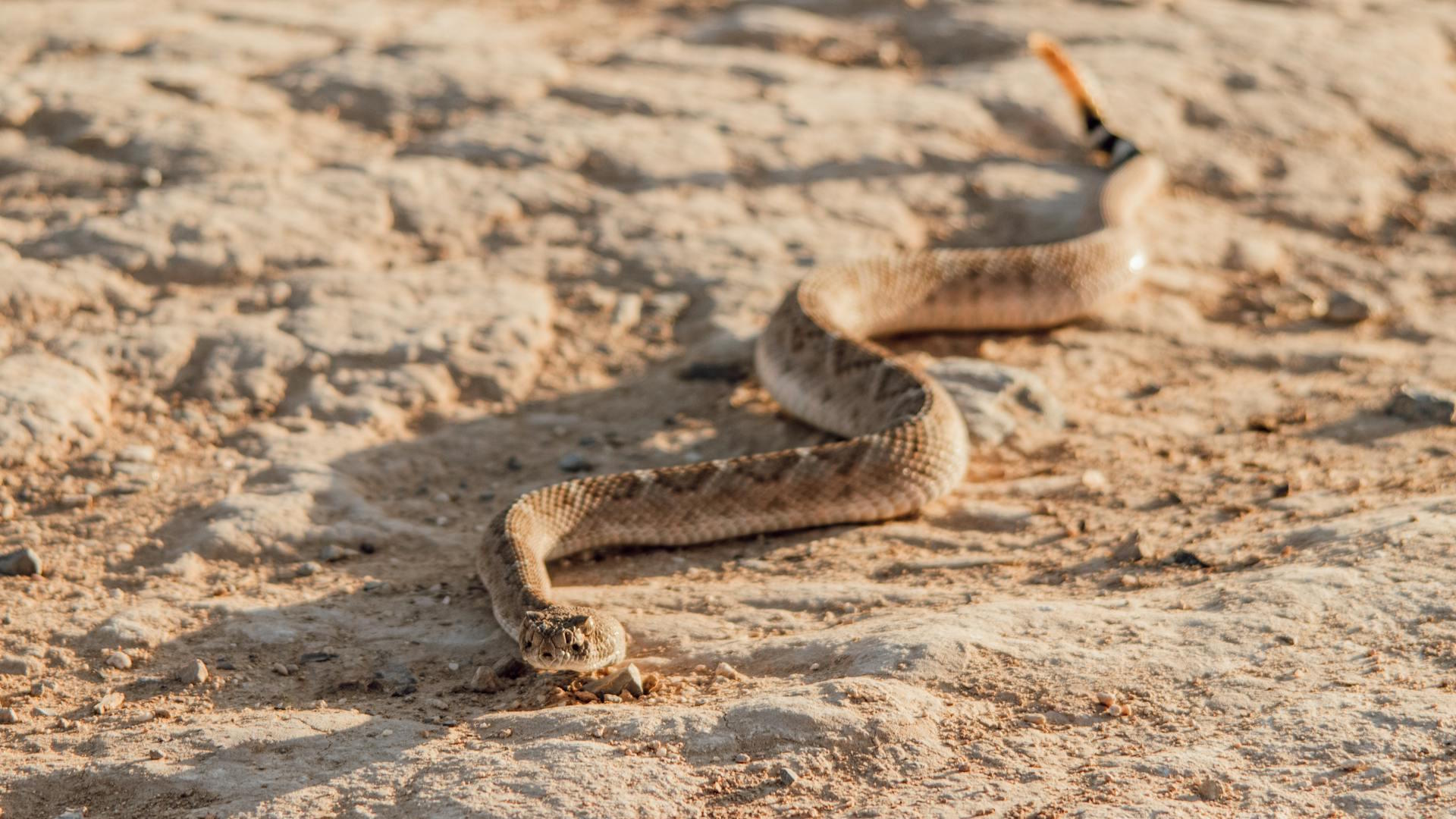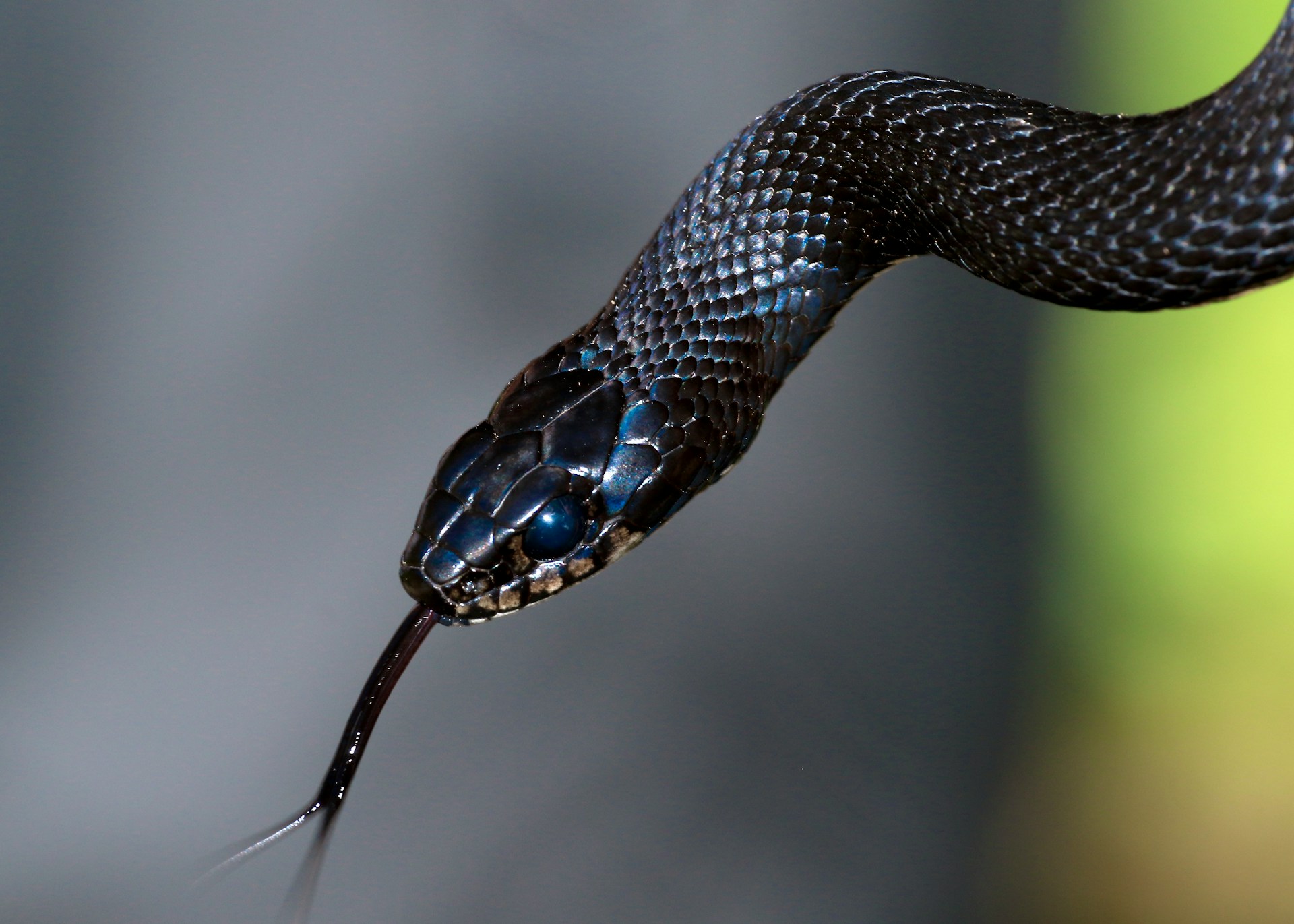In a world where humans and wildlife increasingly share habitats, knowing how to identify potentially dangerous reptiles can be a lifesaving skill. Whether you’re hiking through a forest, exploring a desert trail, or even gardening in your backyard, encounters with venomous or aggressive reptiles are always a possibility.
While most reptiles prefer to avoid human contact, mistaken identification or accidental encounters can lead to serious injury or worse.
This comprehensive guide will help you recognize the telltale signs of dangerous reptile species across various environments, understand their behaviors, and know what immediate actions to take if you spot one.
Remember, respecting these remarkable creatures from a safe distance is the best approach for both human safety and reptile conservation.
Understanding Reptile Danger Categories
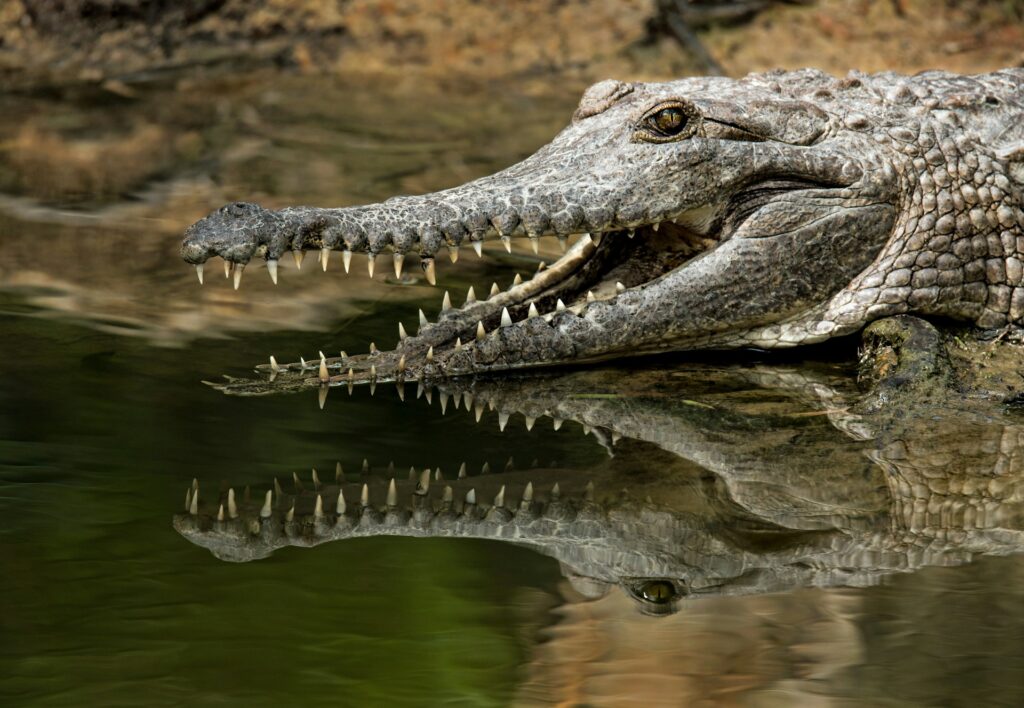
Dangerous reptiles typically fall into two main categories: venomous species that can inject toxins through bites or stings and non-venomous species that can cause significant physical trauma through powerful bites, constriction, or other aggressive behaviors.
Venomous reptiles include certain snakes, lizards like the Gila monster and Mexican beaded lizard, and even some semi-aquatic species with specialized defense mechanisms.
Non-venomous but potentially dangerous reptiles typically include large crocodilians, certain monitor lizards, and large constrictor snakes that can cause serious injuries through their sheer size and strength.
Understanding these distinct categories helps prioritize which identification features are most important to recognize in different environments and situations, allowing for appropriate caution levels when encountering unknown reptile species.
Identifying Venomous Snakes: Universal Characteristics
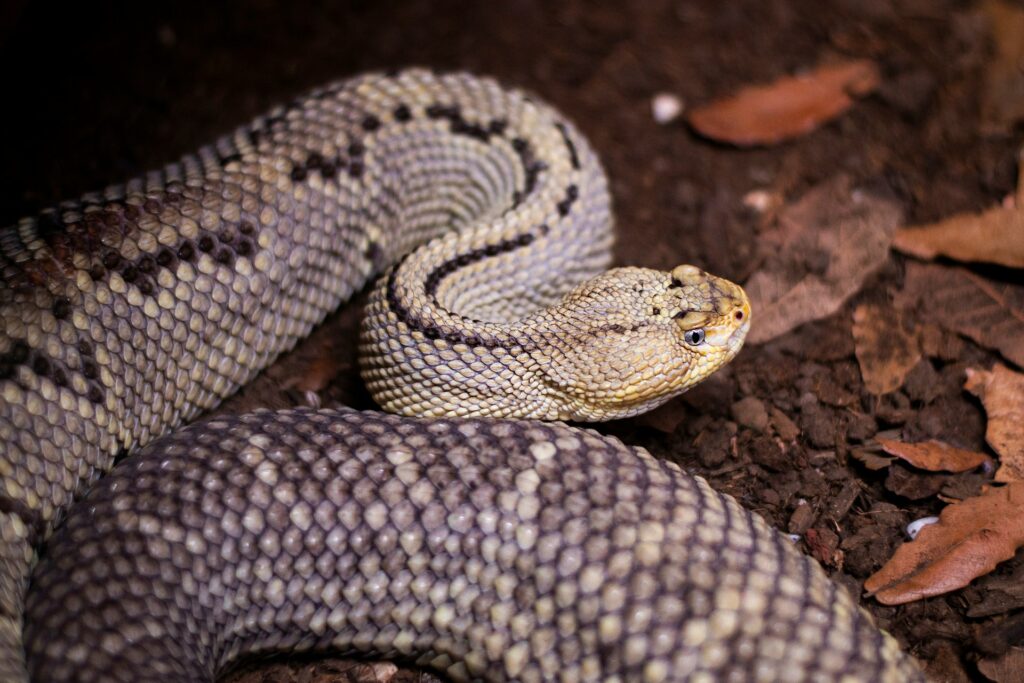
While venomous snake identification varies by region, several physical characteristics often serve as warning signs across many species.
Many venomous snakes possess elliptical (cat-like) pupils rather than the round pupils common in non-venomous species, though this isn’t universally reliable and requires dangerous close observation.
Head shape can offer clues, with many venomous species displaying distinctly triangular or arrow-shaped heads that widen at the back due to venom glands, though some harmless snakes can flatten their heads defensively to mimic this shape.
Certain venomous species like rattlesnakes, copperheads, and cottonmouths have heat-sensing pits between their eyes and nostrils that non-venomous snakes lack.
Remember that color patterns, while helpful in certain regions with limited species diversity, are among the least reliable identification methods and should never be the sole factor in determining a snake’s potential danger.
North American Pit Vipers: Rattlesnakes, Copperheads, and Cottonmouths
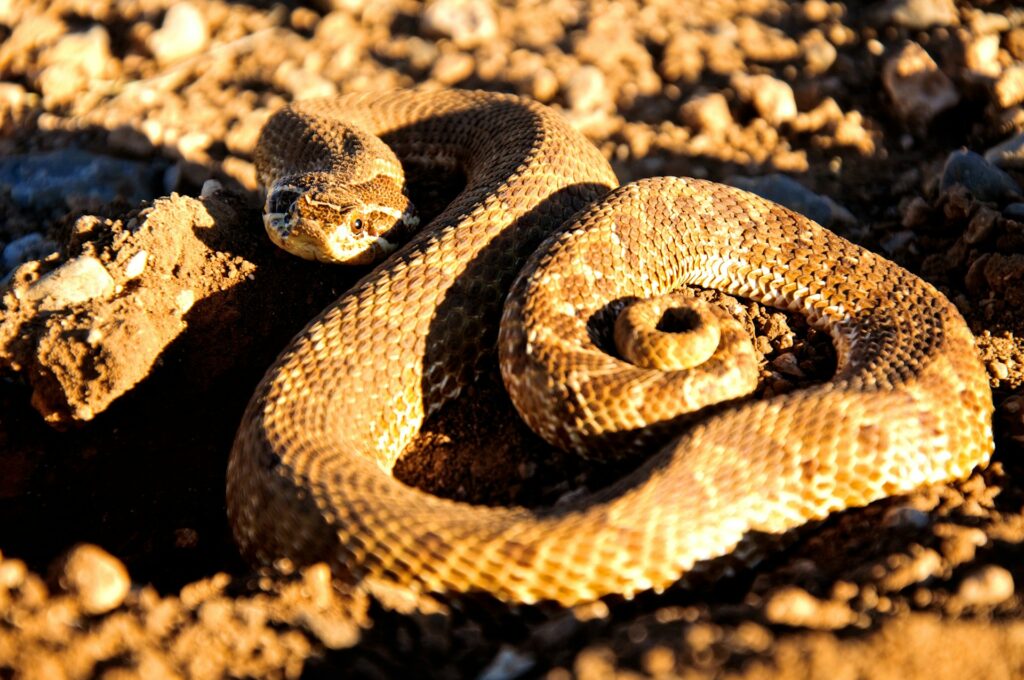
North America is home to several dangerous pit viper species, characterized by heat-sensing pits between their eyes and nostrils that detect warm-blooded prey.
Rattlesnakes are the most widely recognized, possessing a distinctive rattle at the tail end that serves as a warning sound when threatened, though young rattlesnakes may have only a button and some endangered species have evolved to rattle less frequently.
Copperheads display hourglass-shaped crossbands of coppery brown and tan, with young specimens often having bright yellow or green tail tips.
Cottonmouths (water moccasins) are semi-aquatic with dark brown to black coloration, often with faint crossbands, and are known for their defensive display of opening their mouths wide to reveal the white lining when threatened.
All North American pit vipers share vertically elliptical pupils, triangular heads, and single rows of subcaudal scales (underneath the tail), though these features require close inspection that’s not recommended for amateurs.
Coral Snakes and Their Mimics
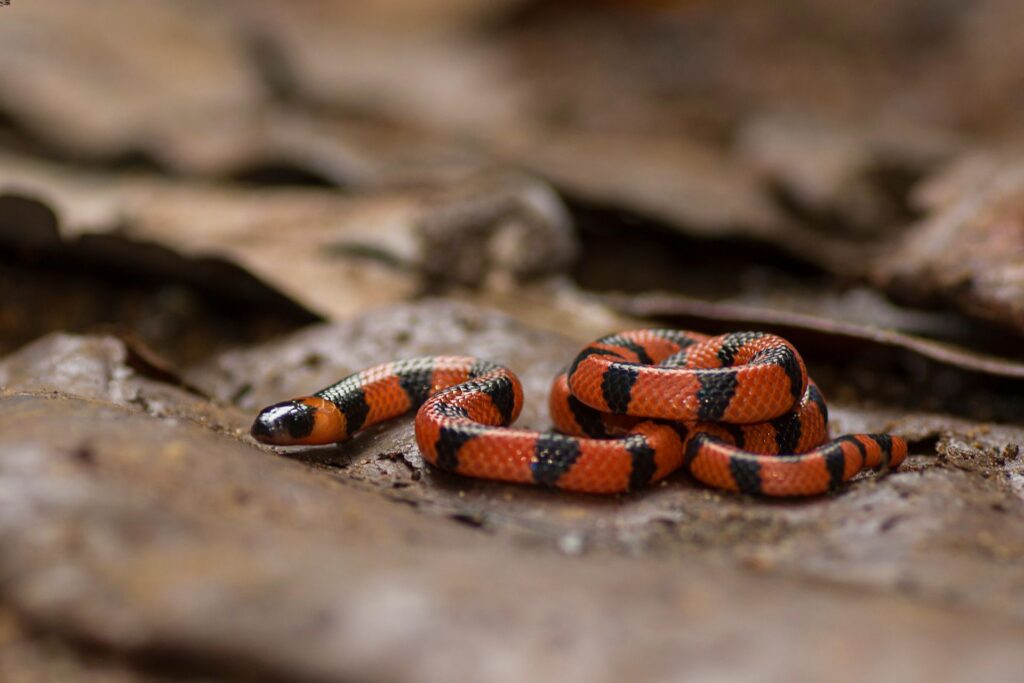
Coral snakes are highly venomous elapids found in North, Central, and South America, recognized by their distinctive pattern of brightly colored bands.
In North America, the well-known rhyme “red touch yellow, kill a fellow; red touch black, friend of Jack” helps distinguish venomous coral snakes (where red bands touch yellow bands) from their harmless mimics like scarlet kingsnakes and milk snakes (where red bands touch black bands).
However, this rule only applies reliably to North American species; in Central and South America, color patterns vary significantly, making identification more complex.
Beyond coloration, coral snakes typically have small heads that barely widen from their necks and rounded black snouts, compared to their mimics’ more distinct head shapes and red or orange-tipped snouts.
Their small, fixed fangs mean coral snakes must chew to deliver venom effectively, unlike the striking mechanism of vipers.
Dangerous Reptiles of Asia and Australia
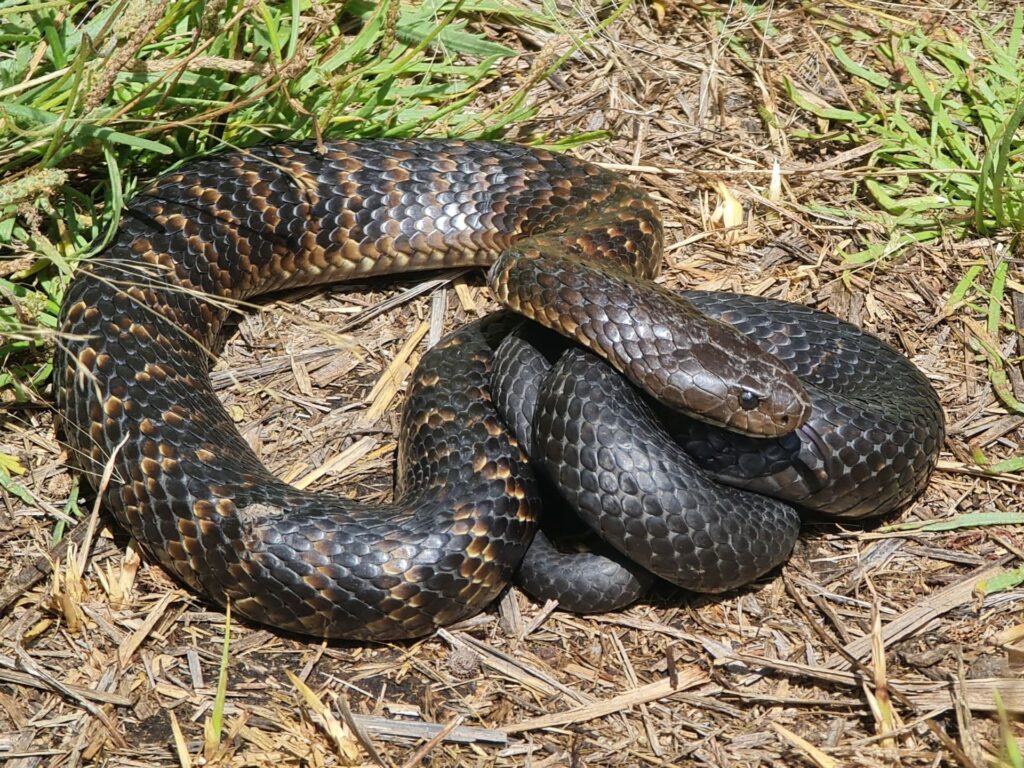
Asia and Australia host some of the world’s deadliest reptiles, requiring special attention from travelers and residents alike.
Australia is infamous for its highly venomous snakes, including the inland taipan (often considered the world’s most venomous snake), eastern brown snake, and tiger snake, all belonging to the elapid family with potent neurotoxic venoms.
The Asian continent features deadly kraits with distinctive black and white banded patterns, king cobras that can grow over 18 feet long and possess the ability to raise their bodies and spread their hoods when threatened, and Russell’s vipers with their characteristic chain-like pattern along the back.
For lizards, the Komodo dragon of Indonesia represents a unique danger, growing up to 10 feet long with bacteria-laden saliva that can cause severe infections from even minor bites.
When traveling in these regions, maintaining awareness of local dangerous species through regional field guides or wildlife apps is essential for safety.
African Dangerous Reptiles
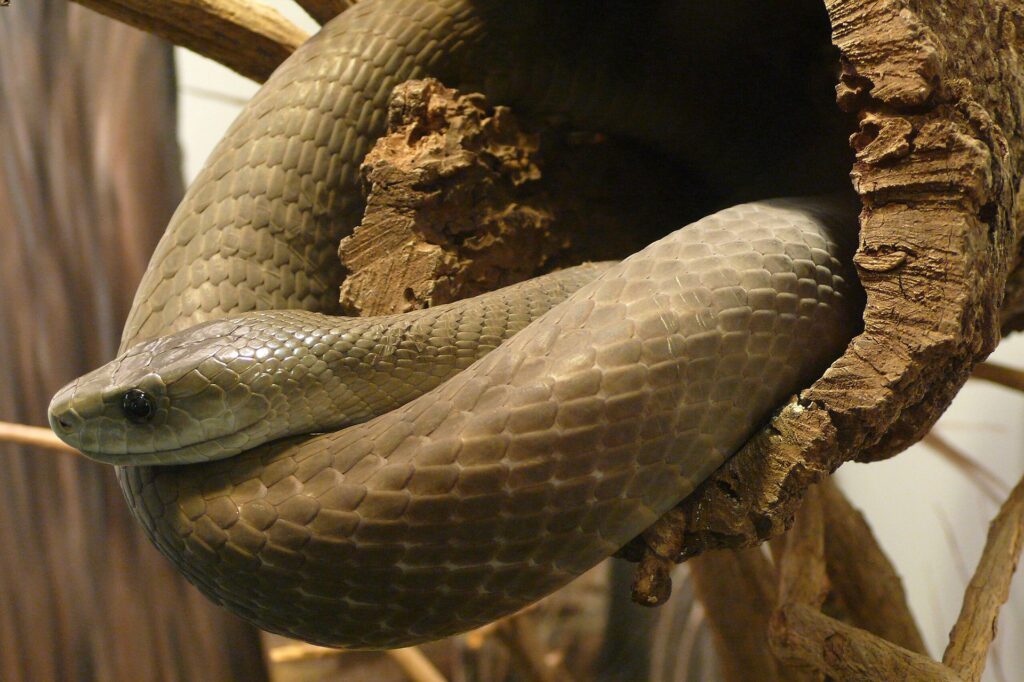
Africa hosts an impressive diversity of potentially lethal reptiles across its varied ecosystems, from deserts to rainforests.
The black mamba, perhaps Africa’s most feared snake, can reach speeds of 12.5 mph, grows to lengths of 14 feet, and possesses venom that can cause death within hours if untreated.
Puff adders, responsible for more snakebite fatalities than any other African snake, are ambush predators with exceptional camouflage that often remain motionless rather than fleeing when approached.
The African rock python, while non-venomous, ranks among the continent’s most dangerous reptiles due to its massive size (up to 25 feet) and powerful constricting abilities.
Africa’s crocodilians present another serious threat, with Nile crocodiles responsible for hundreds of human fatalities annually, identifiable by their broad snouts, large teeth visible even when the mouth is closed, and aggressive territorial behavior near waterways.
Recognizing Dangerous Lizards
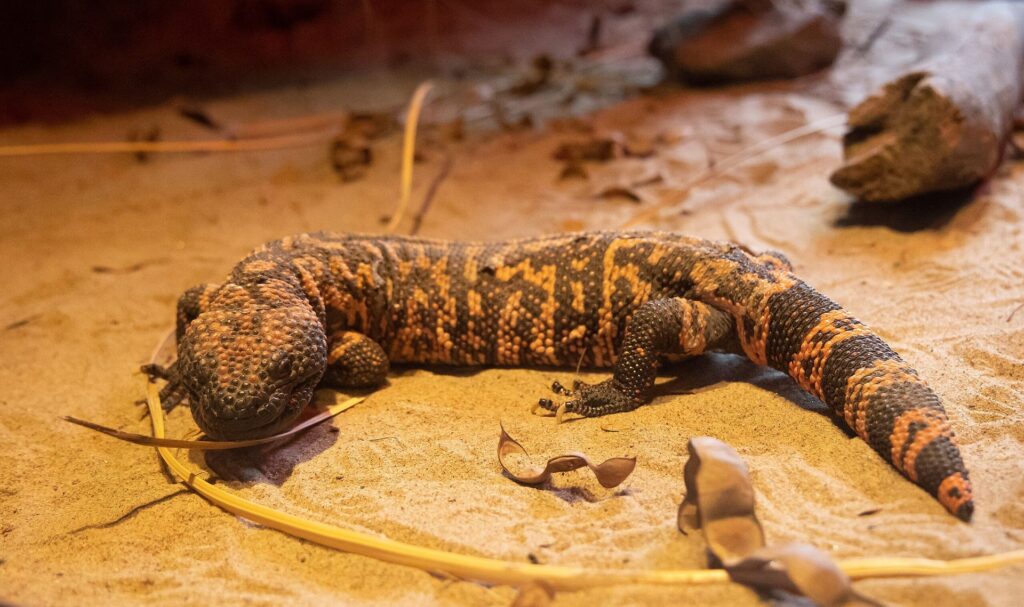
While venomous lizards are rare compared to snakes, several species pose significant dangers to humans.
The Gila monster and Mexican beaded lizard, both native to North America, are the world’s only truly venomous lizards, identifiable by their stocky bodies, beaded scales, and distinctive black patterning with pink, orange, or yellow markings.
These slow-moving lizards deliver venom through grooved teeth in their lower jaw while chewing, rather than through fangs.
Several monitor lizard species, including the Komodo dragon and water monitor, pose threats through powerful bites, strong claws, and bacteria-laden saliva that can cause serious infections.
The common characteristic among dangerous lizards is typically size—most harmful species are relatively large—though the smaller venomous species compensate with bright warning coloration.
Unlike dangerous snakes that may strike quickly and retreat, threatening lizards often display warning behaviors like hissing, tail whipping, or throat inflating before attacking.
Crocodilians: Alligators, Crocodiles, and Caimans
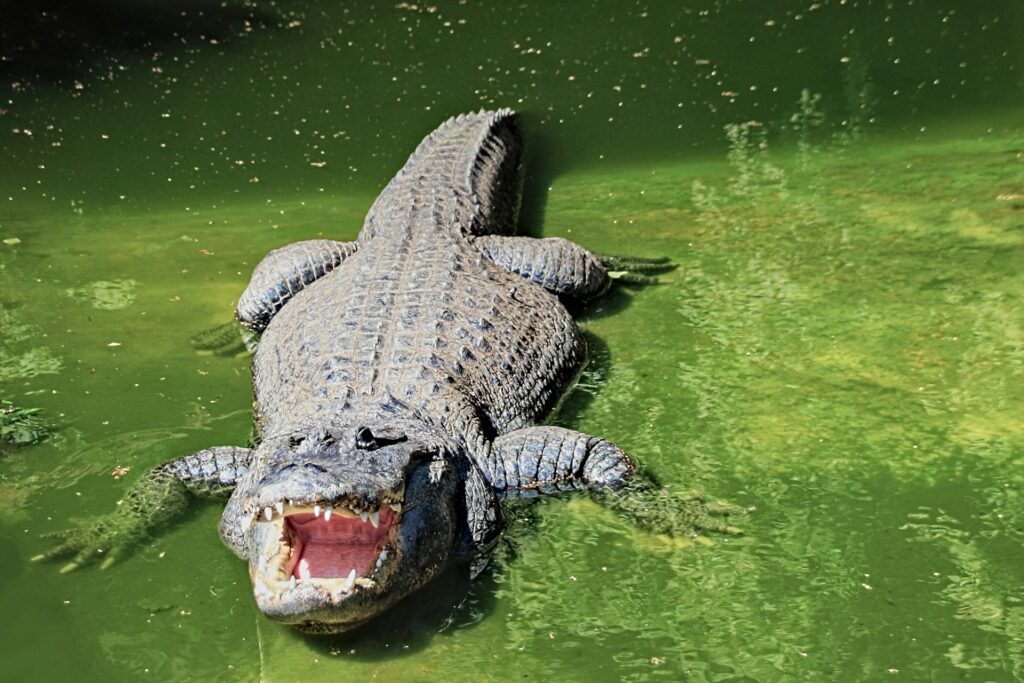
Crocodilians represent some of the most physically dangerous reptiles worldwide, responsible for hundreds of human fatalities annually in regions where they’re abundant.
Distinguishing between crocodiles and alligators can be crucial in assessing risk levels: crocodiles typically have more V-shaped snouts compared to the broader U-shaped snouts of alligators, and crocodiles display visible lower teeth when their mouths are closed, while alligators’ teeth are mostly hidden.
Saltwater crocodiles, found across Southeast Asia to Northern Australia, are particularly aggressive and can exceed 20 feet in length, making them the largest and most dangerous reptiles on Earth.
Behavioral warning signs of aggression in crocodilians include open-mouth displays (gaping), hissing, tail slapping on water, and raised body posture with the head elevated above water.
Most attacks occur near water edges during dawn or dusk, their primary feeding times, so extra vigilance is warranted when near waterways in regions where these apex predators are present.
Sea Snakes and Aquatic Dangers
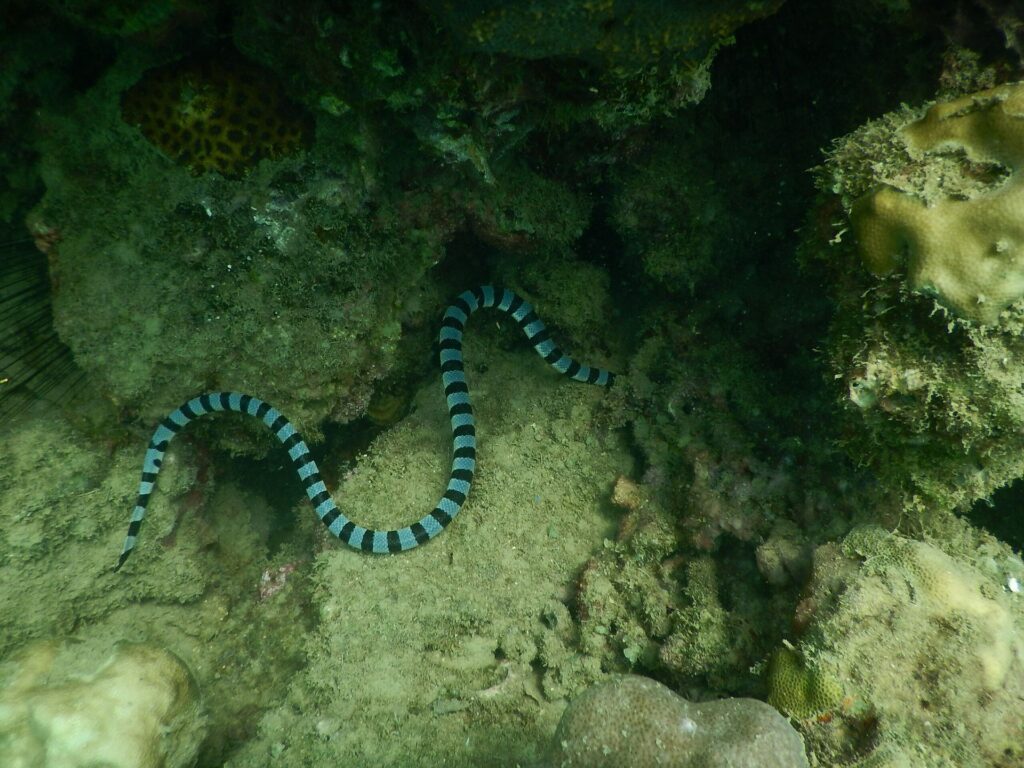
Sea snakes represent a specialized danger for swimmers, divers, and fishermen in tropical and subtropical waters, particularly throughout the Indo-Pacific region.
These marine reptiles possess some of the most potent venoms in the animal kingdom, with toxicity often exceeding that of land snakes.
Identifying characteristics include flattened, paddle-like tails for swimming; valve-like nostrils that close underwater; and typically banded coloration patterns, though solid-colored species exist.
Unlike most venomous land snakes, sea snakes generally have small fangs and must chew to inject venom effectively, which partially explains why bites to humans, while potentially lethal, are relatively rare.
The yellow-bellied sea snake is particularly noteworthy as the most widely distributed reptile in the world, found in tropical oceanic waters worldwide except the Atlantic, and identifiable by its distinctive yellow underside contrasting with dark brown or black upper surfaces.
Fortunately, most sea snake species are relatively docile and bite only when provoked or accidentally entangled in fishing nets.
Behavioral Warning Signs

Recognizing behavioral indicators that a reptile feels threatened can prevent dangerous encounters before they escalate to bites or attacks.
Rattlesnakes and other vipers often coil their bodies, raise their heads in an S-shape, and may vibrate their tails (whether they possess rattles or not) when feeling threatened, creating crucial moments for humans to retreat.
Cobras and related elapids typically raise the front portion of their bodies and spread their hoods—an unmistakable warning display that demands immediate respect and distance.
Monitor lizards and other large lizards may inflate their throats, hiss loudly, and whip their powerful tails when agitated, behaviors that should never be ignored or misinterpreted as non-threatening.
Even typically non-aggressive species like most pythons and boas will display warning behaviors when stressed, including hissing, striking with closed mouths, or rapidly vibrating their tails against nearby vegetation to create warning sounds.
Regardless of species, any reptile that stops moving and focuses its attention on you should be considered potentially dangerous and given a wide berth.
What to Do During an Encounter
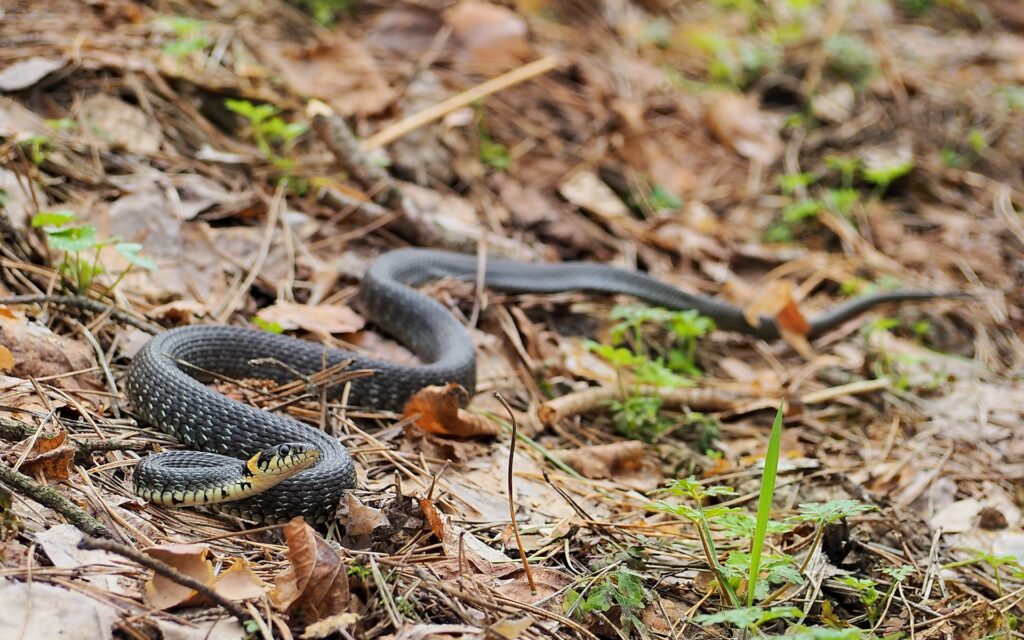
When unexpectedly encountering a potentially dangerous reptile, your immediate actions significantly affect the outcome’s safety.
First and foremost, remain calm and avoid sudden movements that might trigger a defensive response—most reptile attacks occur when the animal feels threatened or cornered.
Back away slowly without turning your back on the animal, maintaining a distance of at least twice the animal’s body length (more for species that can strike quickly, like snakes).
Never attempt to handle, capture, or kill the animal, as these actions dramatically increase bite risk and are illegal for many protected species.
For crocodilians, immediately move away from water edges where they have the advantage, and seek higher ground if possible.
If hiking in snake country, always wear closed shoes and long pants, step on logs rather than over them (where snakes might be hidden on the other side), and use walking sticks to probe vegetation before stepping through it.
Remember that most reptiles would prefer to avoid human interaction entirely if given the opportunity to escape.
Emergency Response to Bites and Attacks
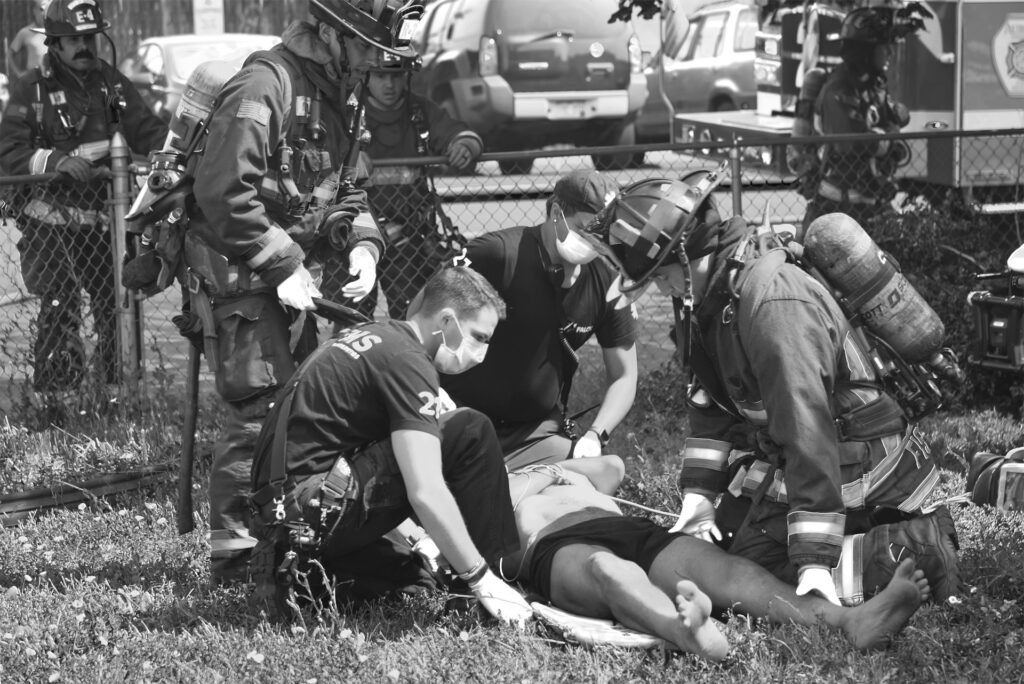
In the unfortunate event of a bite or attack from a dangerous reptile, proper emergency response can save lives.
For venomous snakebites, keep the victim calm and immobile to slow venom spread, remove jewelry or tight clothing near the bite site before swelling occurs, and position the affected limb at or slightly below heart level.
Do not apply tourniquets, cut the wound, attempt to suck out venom, or apply ice—these outdated methods cause more harm than good. If possible, take a photo of the snake for identification (without approaching it again) or note its appearance, as different antivenoms treat different venoms.
For large reptile attacks such as those from crocodilians or large lizards, focus on stopping bleeding through direct pressure while seeking immediate medical attention.
In all cases, contact emergency services immediately, providing your exact location and, if known, the species involved in the attack.
Time is critical with serious reptile envenomations, where medical intervention within the first few hours significantly improves survival rates.
Technology and Resources for Identification
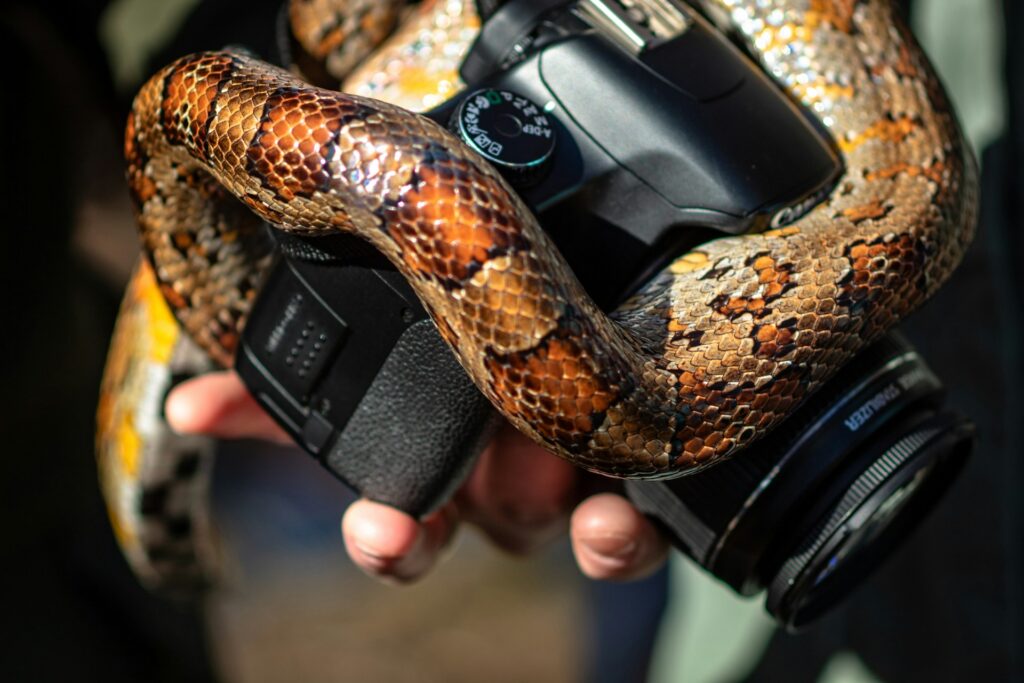
Modern technology offers valuable tools for accurate reptile identification without risking close contact.
Numerous smartphone applications now provide photo-based identification services where users can upload images of unknown reptiles for expert analysis or AI-powered identification, with some apps specializing in regional dangerous species.
Wildlife authority websites often feature detailed identification guides specific to local dangerous species, complete with range maps showing where encounters are most likely.
Field guides specialized for specific regions remain invaluable resources, particularly those including warning signs, lookalike species comparisons, and emergency response information alongside identification details.
For travelers, the CDC and similar health organizations provide country-specific information about dangerous wildlife, including medically significant reptiles and the location of antivenin repositories.
When moving to or visiting areas with unfamiliar dangerous species, taking advantage of these resources before potential encounters significantly reduces risk and increases confidence in making safe identification decisions.
Conclusion
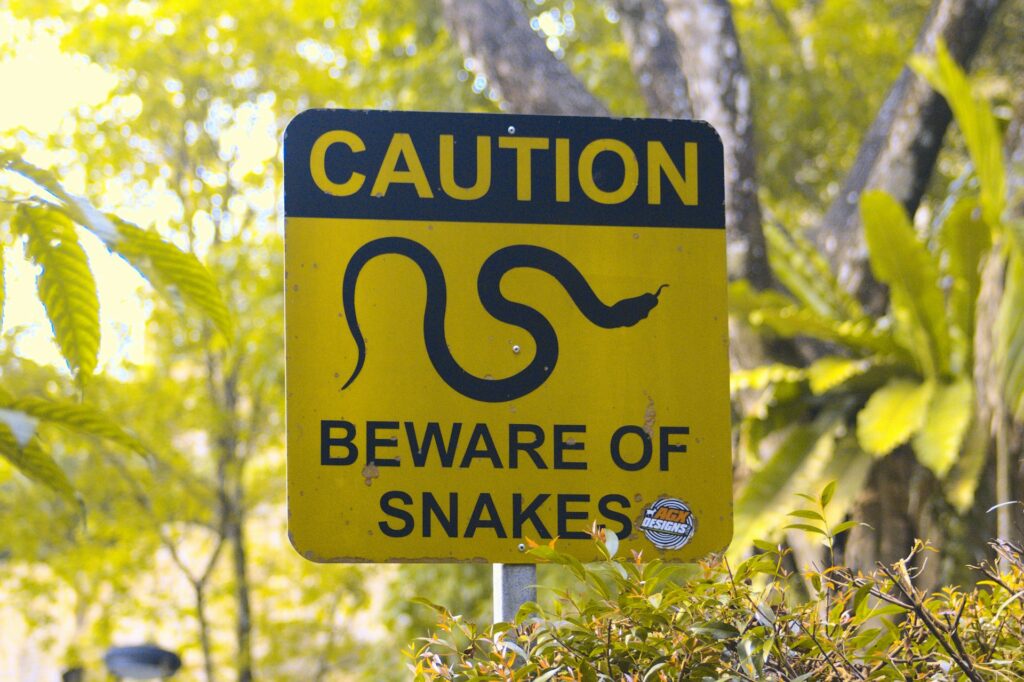
In conclusion, identifying dangerous reptiles before a critical situation develops requires a combination of knowledge, observation skills, and proper respect for wildlife.
While this guide provides essential identification guidelines, remember that distance is your greatest safety tool.
Most reptiles, even potentially dangerous ones, play crucial roles in their ecosystems and typically avoid human interaction when possible.
By learning to recognize warning signs, understanding regional risks, and knowing proper emergency procedures, you can appreciate these remarkable animals while maintaining your safety and theirs.
Whether you’re a hiker, photographer, gardener, or simply someone who shares habitat with reptiles, the knowledge to identify potentially dangerous species empowers you to make informed decisions that benefit both humans and wildlife.

